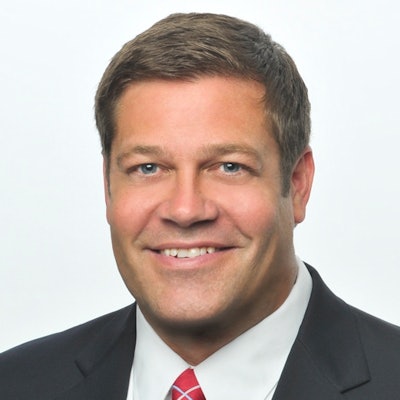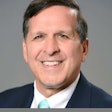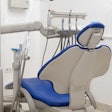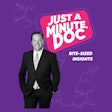
Although dental practices were restricted to providing urgent and emergency procedures when COVID-19 shutdowns went into effect, they have since been able to fully reopen across the country as of May or June, based on local guidelines.
Looking back on the first 90 to 120 days since resuming full operations, it's clear that the dental industry is well positioned to rebound in the face of unprecedented circumstances. In fact, according to the ADA, 99% of U.S. dental practices were able to successfully reopen as of the week of August 24. This is due to the realization that dental practices are essential to good overall health and the industry's ability to quickly pivot, implement enhanced safety protocols, and effectively communicate these changes with both patients and staff.
 Dan Croft.
Dan Croft.Additionally, many practice owners were able to obtain loan, mortgage/rent, and other overhead payment forbearance from their financial institutions along with taking advantage of special programs such as the U.S. Small Business Administration's Paycheck Protection Program (PPP) and Economic Injury Disaster loans to offset temporarily reduced revenues. Fortunately, for the majority of practices, annual revenue was not lost, but delayed. The need for routine dental examinations remained and with treatment postponed due to mandated closures, some clinical symptoms were exacerbated. As a result, many patients postponed their treatments instead of canceling outright.
Now, as the colder months quickly approach accompanied by an increased fear of a second wave of the virus and a seasonal flu, dentists should consider how they will continue to ensure patient confidence and maintain practice revenues.
Dentists can continue to thrive by keeping the following points in mind.
Constantly communicate hygiene/safety protocol to patients
According to a recent Kaiser Family Foundation Health Tracking Poll, 82% of respondents were prioritizing going to a dental or medical appointment in person over the next three months. While patients are visiting practices now, they may not always feel as confident, especially if there is a second spike in COVID-19 cases during colder months. Although dental practices have already implemented safety and hygiene protocols as outlined by the U.S. Centers for Disease Control and Prevention (CDC), the Occupational Safety and Health Administration (OSHA), and the ADA, they will need to continue to remind patients of these changes and how they are maintaining safety and sterilization protocols in order to ease patient concerns. Along with directly communicating with the patient by phone, email, or text, practices should provide reassurances on their website and through social media posts. Additionally, physical postings at the practice that detail updated protocols are important reminders for both patients and staff.
Evaluate practice operations beyond the exam room
Dental practices should continue to implement and enhance the office operations they have put in place to ensure limited face-to-face interaction with staff to bolster patient confidence. This includes online scheduling, adding previsit instructions, implementing a paperless check-in process, leveraging two-way text messaging so patients can check in remotely and avoid the waiting room, and offering contactless payment options. Returning patients have new expectations and want to receive proper treatment with limited interaction, so practices need to alter their operations accordingly.
Along with contactless protocol and payment options, practices can also highlight the increased time they spend on each patient to properly disinfect, sterilize, and prepare the operatory for the next patient and how they've adjusted scheduling to accommodate the specific needs of each patient group, including patients at higher risk of COVID-19. These operational changes will help patients feel more comfortable returning or continuing to visit the practice should there be another uptick in COVID-19 cases.
Outline financial plans
As unemployment has risen, dentists are looking for creative strategies to best support and retain patients while managing the expansion of underinsured and uninsured patients. Many dentists are providing flexible third-party payment options for larger procedures, implementing a dental membership plan, expanding teledentistry services, and reactivating lapsed patients, thus allowing practice owners to realize additional revenues from their existing patient base.
In case of a second wave of the virus, practice owners should know how much monthly revenue the business needs to break even. It is critical to track the most important operational, clinical, and financial metrics to build and manage your cash flow forecasts. It's also important for practices to assess how best to use any PPP or Economic Injury Disaster loan funds and track proper documentation to ensure eligibility for PPP forgiveness by year-end. Practice owners should also consider ascertaining scheduling, capacity, and needed office hours/days to enable the practice to see all patients who require dental treatment.
Additionally, many dental practices were not prepared to weather an economic downturn like the one brought on by COVID-19. If they haven't already, dental practices should develop an emergency preparedness plan to ensure they have the proper capital reserves and funding sources they need in case patient revenue declines. Since (at the time of this writing) a decision has not yet been made to extend the PPP, dentists cannot rely on additional government relief. However, dental practices should stay in constant communication with their banker and continue to build upon this relationship to see how they may be able to secure additional financial support.
While the dental industry is on a positive trajectory, it's still important for practice owners to provide peace of mind to both patients and staff to ensure patients continue to visit the practice during colder months when there is increased concern about the spread of the virus. The industry must continue to amplify the value of dental health and its role in diagnosing systemic diseases while providing crucial education on safety, hygiene, and contactless protocols to enhance patient confidence.
Dan Croft has been the head of TD Bank's Healthcare Practice Solutions Group since 2014. In this role, he is responsible for overseeing and growing TD Bank's healthcare practice finance business, which assists dentists, veterinarians, optometrists, physicians, and podiatrists in choosing sound financial solutions for their practices. Croft has more than 20 years of experience.
The comments and observations expressed herein do not necessarily reflect the opinions of DrBicuspid.com, nor should they be construed as an endorsement or admonishment of any particular idea, vendor, or organization.



















